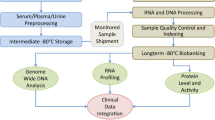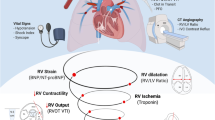Abstract
Purpose of Review
Acute pulmonary embolism is a major cause of morbidity and mortality in the USA and throughout the world. This review will summarize recent developments in short- and long-term mortality risk assessment after an acute pulmonary embolism.
Recent Findings
Recent guidelines have emphasized risk stratification of acute PE patients on the basis of blood pressure, right ventricular size, and biomarker status. Ongoing work is testing various acute treatment strategies for improvement of symptom burden, length of stay, quality of life, and possibly mortality risk reduction. Long-term outcomes among subjects with acute PE are less well studied. Long-term mortality largely correlates with baseline co-morbidity burden, although there may be an association between acute PE severity and long-term outcomes.
Summary
Acute PE risk stratification and treatment, as well as long-term follow-up of patients with acute PE, are rapidly developing areas and many promising innovations are underway.

Similar content being viewed by others
Abbreviations
- PE:
-
Pulmonary embolism
- DVT:
-
Deep venous thrombosis
- VTE:
-
Venous thromboembolism
- sPESI:
-
Simplified Pulmonary Embolism Severity Index
- SBP:
-
Systolic blood pressure
- HR:
-
Heart rate
- RV:
-
Right ventricle
- LV:
-
Left ventricle
- ICOPER:
-
International Cooperative Pulmonary Embolism Registry
- ECMO:
-
Extracorporeal membrane oxygenation
- BNP:
-
Brain natriuretic peptide
- CTEPH:
-
Thromboembolic pulmonary hypertension
- RVSP:
-
Right ventricular systolic pressure
- TAPSE:
-
Tricuspid Annular Plane Systolic Excursion
- ESC:
-
European Society of Cardiology
References
Papers of particular interest, published recently, have been highlighted as: • Of importance •• Of major importance
•• Konstantinides SV, et al. ESC guidelines on the diagnosis and management of acute pulmonary embolism. Eur Heart J. 2014;35(43):3033–69 3069a-3069k. Comprehensive guidelines for acute PE including excellent overview of risk stratification.
Beckman MG, Hooper WC, Critchley SE, Ortel TL. Venous thromboembolism: a public health concern. Am J Prev Med. 2010;38(4 Suppl):S495–501.
Heit JA, Ashrani A, Crusan DJ, McBane R, Petterson TM, Bailey KR. Reasons for the persistent incidence of venous thromboembolism. Thromb Haemost. 2017;117(2):390–400.
Heit JA, Spencer FA, White RH. The epidemiology of venous thromboembolism. J Thromb Thrombolysis. 2016;41(1):3–14.
Goldhaber SZ, Visani L, De Rosa M. Acute pulmonary embolism: clinical outcomes in the International Cooperative Pulmonary Embolism Registry (ICOPER). Lancet. 1999;353(9162):1386–9.
Jaff MR, McMurtry M, Archer SL, Cushman M, Goldenberg N, Goldhaber SZ, et al. Management of massive and submassive pulmonary embolism, iliofemoral deep vein thrombosis, and chronic thromboembolic pulmonary hypertension: a scientific statement from the American Heart Association. Circulation. 2011;123(16):1788–830.
Kucher N, Goldhaber SZ. Management of massive pulmonary embolism. Circulation. 2005;112(2):e28–32.
Becattini C, Agnelli G. Acute pulmonary embolism: risk stratification in the emergency department. Intern Emerg Med. 2007;2(2):119–29.
Becattini C, Casazza F, Forgione C, Porro F, Fadin BM, Stucchi A, et al. Acute pulmonary embolism: external validation of an integrated risk stratification model. Chest. 2013;144(5):1539–45.
Apfaltrer P, Walter T, Gruettner J, Weilbacher F, Meyer M, Henzler T, et al. Prediction of adverse clinical outcome in patients with acute pulmonary embolism: evaluation of high-sensitivity troponin I and quantitative CT parameters. Eur J Radiol. 2013;82(3):563–7.
Klok FA, Mos IC, Huisman MV. Brain-type natriuretic peptide levels in the prediction of adverse outcome in patients with pulmonary embolism: a systematic review and meta-analysis. Am J Respir Crit Care Med. 2008;178(4):425–30.
Meyer G, Vicaut E, Konstantinides SV. Fibrinolysis for intermediate-risk pulmonary embolism. N Engl J Med. 2014;371(6):581–2.
Kucher N, Rossi E, de Rosa M, Goldhaber SZ. Prognostic role of echocardiography among patients with acute pulmonary embolism and a systolic arterial pressure of 90 mm Hg or higher. Arch Intern Med. 2005;165(15):1777–81.
Chan CM, Woods C, Shorr AF. The validation and reproducibility of the Pulmonary Embolism Severity Index. J Thromb Haemost. 2010;8(7):1509–14.
Aujesky D, Obrosky DS, Stone RA, Auble TE, Perrier A, Cornuz J, et al. Derivation and validation of a prognostic model for pulmonary embolism. Am J Respir Crit Care Med. 2005;172(8):1041–6.
Righini M, et al. The simplified Pulmonary Embolism Severity Index (PESI): validation of a clinical prognostic model for pulmonary embolism. J Thromb Haemost. 2011;9(10):2115–7.
Jimenez D, et al. Simplification of the Pulmonary Embolism Severity Index for prognostication in patients with acute symptomatic pulmonary embolism. Arch Intern Med. 2010;170(15):1383–9.
Lankeit M, Jimenez D, Kostrubiec M, Dellas C, Hasenfuss G, Pruszczyk P, et al. Predictive value of the high-sensitivity troponin T assay and the simplified Pulmonary Embolism Severity Index in hemodynamically stable patients with acute pulmonary embolism: a prospective validation study. Circulation. 2011;124(24):2716–24.
Spirk D, Aujesky D, Husmann M, Hayoz D, Baldi T, Frauchiger B, et al. Cardiac troponin testing and the simplified Pulmonary Embolism Severity Index. The SWIss Venous ThromboEmbolism Registry (SWIVTER). Thromb Haemost. 2011;106(5):978–84.
• Khemasuwan D, et al. Right ventricular echocardiographic parameters are associated with mortality after acute pulmonary embolism. J Am Soc Echocardiogr. 2015;28(3):355–62 Echocardiographic predictors of adverse events after acute PE.
• Pruszczyk P, et al. Prognostic value of echocardiography in normotensive patients with acute pulmonary embolism. JACC Cardiovasc Imaging. 2014;7(4):553–60 Echocardiographic predictors of adverse events after acute PE.
Wan S, Quinlan DJ, Agnelli G, Eikelboom JW. Thrombolysis compared with heparin for the initial treatment of pulmonary embolism: a meta-analysis of the randomized controlled trials. Circulation. 2004;110(6):744–9.
Piazza G, Hohlfelder B, Jaff MR, Ouriel K, Engelhardt TC, Sterling KM, et al. A prospective, single-arm, multicenter trial of ultrasound-facilitated, catheter-directed, low-dose fibrinolysis for acute massive and submassive pulmonary embolism: the SEATTLE II Study. JACC Cardiovasc Interv. 2015;8(10):1382–92.
Tapson VF, Sterling K, Jones N, Elder M, Tripathy U, Brower J, et al. A randomized trial of the optimum duration of acoustic pulse thrombolysis procedure in acute intermediate-risk pulmonary embolism: the OPTALYSE PE trial. JACC Cardiovasc Interv. 2018;11(14):1401–10.
Sharifi M, Bay C, Skrocki L, Rahimi F, Mehdipour M, “MOPETT” Investigators. Moderate pulmonary embolism treated with thrombolysis (from the “MOPETT” trial). Am J Cardiol. 2013;111(2):273–7.
• Kosova EC, Desai KR, Schimmel DR. Endovascular management of massive and submassive acute pulmonary embolism: current trends in risk stratification and catheter-directed therapies. Curr Cardiol Rep. 2017;19(6):54 Good overview of catheter-directed therapies for acute PE.
Jaber WA, Fong PP, Weisz G, Lattouf O, Jenkins J, Rosenfield K, et al. Acute pulmonary embolism: with an emphasis on an interventional approach. J Am Coll Cardiol. 2016;67(8):991–1002.
Neely RC, Byrne JG, Gosev I, Cohn LH, Javed Q, Rawn JD, et al. Surgical embolectomy for acute massive and submassive pulmonary embolism in a series of 115 patients. Ann Thorac Surg. 2015;100(4):1245–51 discussion 1251-2.
Ng AC, et al. Long-term cardiovascular and noncardiovascular mortality of 1023 patients with confirmed acute pulmonary embolism. Circ Cardiovasc Qual Outcomes. 2011;4(1):122–8.
Klok FA, Tijmensen JE, Haeck MLA, van Kralingen KW, Huisman MV. Persistent dyspnea complaints at long-term follow-up after an episode of acute pulmonary embolism: results of a questionnaire. Eur J Intern Med. 2008;19(8):625–9.
Sista AK, Klok FA. Late outcomes of pulmonary embolism: the post-PE syndrome. Thromb Res. 2018;164:157–62.
Robbins IM, Pugh ME, Hemnes AR. Update on chronic thromboembolic pulmonary hypertension. Trends Cardiovasc Med. 2017;27(1):29–37.
Pengo V, Lensing AW, Prins MH, Marchiori A, Davidson BL, Tiozzo F, et al. Incidence of chronic thromboembolic pulmonary hypertension after pulmonary embolism. N Engl J Med. 2004;350(22):2257–64.
Sista AK, Miller LE, Kahn SR, Kline JA. Persistent right ventricular dysfunction, functional capacity limitation, exercise intolerance, and quality of life impairment following pulmonary embolism: systematic review with meta-analysis. Vasc Med. 2017;22(1):37–43.
•• Konstantinides SV, et al. Impact of thrombolytic therapy on the long-term outcome of intermediate-risk pulmonary embolism. J Am Coll Cardiol. 2017;69(12):1536–44 Long-term follow-up from the PEITHO trial did not demonstrate a reduction in mortality or RV dysfunction after initial thrombolytic treatment of acute PE versus anticoagulation alone.
Author information
Authors and Affiliations
Corresponding author
Ethics declarations
Conflict of Interest
Rajesh Gupta, Dylan D. Fortman, and Daniel R. Morgenstern declare that they have no conflict of interest.
Christopher J. Cooper reports a patent pending.
Human and Animal Rights and Informed Consent
This article does not contain any studies with human or animal subjects performed by any of the authors.
Additional information
This article is part of the Topical Collection on Peripheral Vascular Disease
Rights and permissions
About this article
Cite this article
Gupta, R., Fortman, D.D., Morgenstern, D.R. et al. Short- and Long-term Mortality Risk After Acute Pulmonary Embolism. Curr Cardiol Rep 20, 135 (2018). https://doi.org/10.1007/s11886-018-1084-6
Published:
DOI: https://doi.org/10.1007/s11886-018-1084-6




